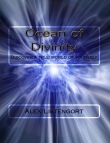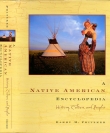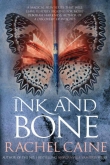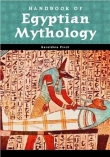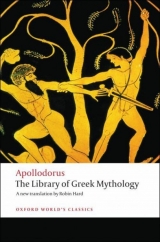
Текст книги "The Library of Greek Mythology"
Автор книги: Apollodorus
Жанры:
Религия
,сообщить о нарушении
Текущая страница: 3 (всего у книги 27 страниц)
NOTE ON THE TEXT AND TRANSLATION
ALL surviving manuscripts of the Libraryare descended from a single original, a fourteenth-century manuscript in the Bibliotheque Nationale in Paris. Unfortunately this breaks off before the end of the work, during the section on Theseus (p. 138), which meant that, until quite recently, the valuable account of the Trojan cycle was entirely lost. But the situation was improved at the end of the last century by the discovery of two epitomes, or abridgements, of the Library, which provide a very serviceable summary of the end of the work. They were found quite independently, in the Vatican Library (the Vatican epitome) and the monastery of Saint Sabbas in Jerusalem (the Sabbaitic epitome), in 1885 and 1887 respectively.
The standard modern text, that of Richard Wagner in the Teubner series (1926 edn.), has been used for the present translation, although alternative readings have sometimes been preferred, and account has been taken of the more recent literature mentioned in the Select Bibliography. The Greek text in Frazer’s edition in the Loeb series is largely based on that of Wagner.
The two epitomes are not identical either in content or, where they cover the same episodes, in expression, and Wagner prints both texts, using parallel columns where necessary; but in a translation, Frazer’s procedure of combining the two to provide a single continuous narrative is clearly preferable. In practice this raises few problems, except occasionally when both epitomes tell the same story but express it in a slightly different way. Only at a very few points have I felt it necessary to question Frazer’s judgement on the selection of material (and it was considered desirable in any case that the translation should correspond as far as possible to Frazer’s Greek text).
This is a utilitarian work which offers no promise of literary delight. The prose of Apollodorus is plain and colourless, and so simple in expression that a translator has little latitude. Without misrepresenting the original, it is hard to prevent a translation from reading like a story-book for young children; but I have tried to bring out the possible advantages of a plain style, and hope that the reader will find the mythical narrative brisk and clear, and if ingenuous, at least agreeably so.
I have benefited from a long familiarity with the translation by Sir James Frazer. Despite the archaisms and a tendency to euphemism on sexual matters, it is a work of quality. I have also consulted the elegant and precise French translation by Carriere and Massonie.
According to the traditional arrangement, the work is divided into three books followed by the Epitome. Each of these is further divided into numbered chapters (here indicated in the margin) and subsections (indicated within the text); and correspondingly, three figures (or two for passages from the Epitome) are cited in references in the scholarly literature (e.g. 2, 4, 6, or Epitome 7, 18). The paragraph numbering found in some editions has been omitted to avoid confusion; I have added italicized headings to make the work easier to consult.
Greek names. These present a real problem because the Latinized forms are not only more familiar, but in many cases have become part of our language and culture. Nevertheless, in a comprehensive work of this kind, containing so many genealogies, it is surely preferable that the original Greek forms should be used. If the Greek names can look strange and unattractive in an English text, this is largely because of the ks(e.g. Kanake, Kirke, Lakonia); but there seems to be no particular disadvantage in using a c(properly a hard c)for Greek kappa, and I have followed that course in the present translation. For very familiar figures, however, like Oedipus and Achilles, the traditional forms have been preserved (except in some cases where the Latin form differs markedly from the original); and for place names, modern or Latinized forms have been used much more frequently. Some guidance on pronunciation and possible sources of confusion is offered at the beginning of the Index. The Greek forms differ most frequently from the Latin in the use of -osinstead of -usat the end of masculine names, and of aiand oiinstead of aeand oe(thus Aigimios and Proitos rather than Aegimius and Proetus).
Square bracketsare used to indicate (1) additions to the original text, and (2) passages where the surviving manuscripts may misrepresent the original text.
1. Additions. Short gaps in the surviving text are usually filled by the insertion of an invented phrase (if the content of the missing passage can be inferred from the context, or from another source) or of a brief passage from another source which can be reasonably assumed to be related to, or dependent on, the original text of the Library. For the most part, the added passages correspond to those in Wagner’s and Frazer’s texts. Again, significant additions are explained in the notes.
Very occasionally, I have added a phrase for the sake of clarity. For minor additions—where it has been indicated, for instance, that a particular place is a mountain, or that a child is a son or daughter, although this is not stated explicitly in the original text—square brackets have not been used.
2. Dubious passages. These are of two main kinds. Something in the content of a passage may give reason to suspect that the text has been corrupted in the course of transmission and no longer corresponds with the original; or occasionally, for reasons of style or content, we may suspect that a passage is a later interpolation (typically a marginal note which has found its way into the main text). Significant instances are discussed in the notes.
NB. Some interpolations which interrupt the narrative (and also a dubious passage from the Epitome) have been segregated to the Appendix. A dagger(†) in the text indicates where each was inserted. Each of the passages is discussed in the accompanying comments; although not part of the original text, four of them contain interesting material.
Etymologies. The ancient mythographers liked to explain the names of mythical figures, or of places involved in mythical tales, by etymologies which were sometimes valid, but often fanciful or even absurd. Because these depend on allusions or wordplay in the original Greek which cannot be reproduced in a translation, the presence of such wordplay is indicated in the text by the appropriate use of italics(see, for instance, p. 88) and explained afterwards in the Notes.
SELECT BIBLIOGRAPHY
Editions and Translations of theLibrary
There have been three English translations:
J. G. Frazer, Apollodorus, The Library, 2 vols., Loeb Classical Library, London, 1921. (The extensive notes give full references to the ancient sources, and contain a mass of disordered information, mythographical and ethnographical; thirteen appendices on specific themes and episodes, citing parallels from the folklore of other cultures.)
K. Aldrich, Apollodorus, The Library of Greek Mythology, Lawrence, Kan., 1975. (With accompanying notes; the translation is more modern in idiom than Frazer’s.)
M. Simpson, Gods and Heroes of the Greeks: The Library of Apollodorus, Amherst, Mass., 1976. (The translation is not always reliable.)
A recent French translation should also be mentioned:
J.-C. Carrière and B. Massonie, La Bibliothèque d’Apollodore, Paris, 1991. (Excellent translation; the copious notes concentrate primarily on textual and linguistic matters, but many mythological points are also discussed; relevant passages from the scholia are often cited in translation.)
The best edition of the Greek text is:
R. Wagner (ed.), Apollodori Bibliotheca {Mythographi Graeci, vol. 1), Leipsig, 1926 (2nd edn. with supplementary apparatus).
On the text, two subsequent articles should also be consulted, along with Carrière’s notes:
A. Diller, ‘The Text History of the Bibliotheca of Pseudo-Apollodorus’, TAPA66 (1935), 296–313.
M. Papathomopoulos, ‘Pour une nouvelle édition de la Bibliothèque d’Apollodore’, Ellenica, 26 (1973), 18–40.
Secondary Literature
The scholarly literature on the Libraryis very scanty. The only full commentary was written in the eighteenth century:
J. G. Heyne, Apollodori Atheniensis Bibliothecae libri tres et fragmenta, 2 vols., Göttingen, 1803, 2nd edn. (Text, with accompanying notes in Latin; a landmark in the scholarly study of myth, and still of more than historical interest.)
As it happens, the most comprehensive modern study is in English:
M. Van der Valk, ‘On Apollodori Bibliotheca’, REG71 (1958), 100–68. (Primarily on the sources of the Library, arguing in particular that the author often referred directly to his main early sources, rather than relying on a Hellenistic handbook; much of the argument is technical, and citations in Greek are not translated.)
Otherwise the following should be mentioned:
C. Jourdain-Annequin, Héraclès aux portes du soir, Paris, 1989. (Contains some suggestive observations on Apollodorus, and his treatment of the Heracles myths in particular.)
C. Robert, De Apollodori Bibliotheca, Inaugural diss., University of Berlin, 1873. (The work that first established that the Librarywas not written in the second century BC by Apollodorus of Athens. Robert argued that it should be dated to the second century AD.)
C. Ruiz Montero, ‘La Morfologia de la “Biblioteca” de Apolodoro’, Faventia, 8 (1986), 29–40. (Not seen.)
E. Schwartz, ‘Apollodoros’, RE1, 2875–86.
Other Ancient Mythographical Works
Two have been translated into English:
Hyginus, The Myths, trans, and ed. M. Grant, Lawrence, Kan. 1960. (A chaotic and often unreliable Latin compendium, probably dating from the second century AD; this volume also includes a translation of the Poetic Astronomy, the largest surviving collection of constellation myths, which forms Book II of Hyginus’ Astronomy.)
AntoninusLiberalis, Metamorphoses, trans. F. Celoria, London, 1992. (An anthology of transformation myths dating from circasecond century AD; the stories are of Hellenistic origin for the most part.)
There are also French translations of Antoninus Liberalis and Hyginus’ Astronomyin the Budé series.
The summaries by Proclus of the early epics in the Trojan cycle are translated in Hesiod and the Homeric Hymns in the Loeb series.
Book IV of the universal history by Diodorus of Sicily is a mythical history of Greece; for a translation, see Diodorus Siculus, vols. 2 and 3, in the Loeb series. (It is less complete than the Libraryof Apollodorus, and the stories are often rationalized; the biography of Heracles is especially interesting.)
Mythological dictionaries and compendia
The excellent dictionary by Pierre Grimal is available in two different editions, as the Dictionary of Classical Mythology(Oxford, 1986, com plete edn., with references to ancient sources), or the Penguin Dictionary of Classical Mythology(Harmondsworth, 1991, a convenient abridged edn.). William Smith’s Dictionary of Greek and Roman Biography and Mythology, 3 vols. (London, 1844) is still of value for the mythological entries by Leonhard Schmitz, which are long, generally reliable, and give full references. Robert Graves’ compendium, The Greek Myths, 2vols. (Harmondsworth, 1955) is comprehensive and attractively written (but the interpretative notes are of value only as a guide to the author’s personal mythology); and Karl Kerenyi in The Gods of the Greeks(London, 1951) and The Heroes of the Greeks(London, 1974) has also retold many of the old stories in his own way. H. J. Rose’s Handbook of Greek Mythology(London, 1928) has not aged well, but it is useful on divine mythology in particular.
Other Books on Greek Myth
The literature is vast, and only a few suggestions can be offered here. For those first approaching the subject (and others too), Fritz Graf, Greek Mythology: An Introduction(Baltimore, 1993), can be recommended unreservedly, as a concise but remarkably complete survey, examining the varieties of Greek myth and also changing attitudes to the myths and their interpretation in ancient and modern times, with helpful bibliographies. To this, three other works may be added which, in their different ways, convey an idea of the distinctive nature of Greek myth: K. Dowden, The Uses of Greek Mythology(London, 1992), a lively introductory work; G. S. Kirk, The Nature of Greek Myths(Harmondsworth, 1974), and above all, R. C. A. Buxton, Imaginary Greece: Contexts of Mythology(Cambridge, 1994), a very rich and suggestive study.
Timothy Gantz’s Early Greek Myth(Baltimore, 1993) is an invaluable guide to the literary and artistic evidence on the early mythological tradition. T. H. Carpenter, Art and Myth in Ancient Greece: A Handbook(London, 1991) offers a useful introduction to the treatment of myth in the visual arts. M. L. West, The Hesiodic Catalogue of Women(Oxford, 1985), explains the origins and nature of the genealogical scheme for heroic mythology which was adopted and developed by the early mythographer-historians, and thence by the author of the Library.
Paul Veyne, Did the Greeks Believe in their Myths?(Chicago, 1988), examines the complex and inconsistent attitudes of the Hellenistic and later Greeks to their traditional myths, and M. Detienne, The Creation of Mythology(Chicago, 1986), the development of our modern conception of mythology. On modern approaches to the interpretation of Greek myth since the eighteenth century, see Grafs discussion, and also the illuminating survey by J.-P. Vernant in Myth and Society in Ancient Greece(Brighton, 1966). And finally, two volumes of essays may be mentioned which show some of the ways in which scholars of the present day approach the interpretation of myth: J. N. Bremmer (ed.), Interpretations of Greek Mythology(London, 1987) and L. Edmunds, Approaches to Greek Myth(Baltimore, 1990).
THE LIBRARY OF GREEK MYTHOLOGY
CONTENTS
THE original text of the Librarycontains no formal subdivisions or chapter headings; at most, the author occasionally indicates that he has concluded his account of one family and is passing on to the next. This can make a modern edition difficult to use, even where it is prefaced with an analytical summary, and a reader first approaching the work is likely to feel, quite mistakenly, that it is formless or even chaotic. To overcome these problems, and to make the work’s implicit structure immediately intelligible, I have divided the book into titled chapters and subsections, as summarized in the following table. In the text, these headings, which form no part of the original text, are italicized.
The basic pattern should be apparent at a glance. Greek mythical history begins with the Theogony, accounting for the origin of the world and the divine order within it, and culminates with the Trojan War and its aftermath; and everything that happens in between forms part of the history—or can be related to the history—of the great families of heroic mythology. Considering the richness of the mythological tradition and the multiplicity of independent centres within the Greek world, there are remarkably few main families, only six here (or seven, depending on whether the Pelasgids in Arcadia are considered to be independent from the Inachids). A thorough grasp of their history is evidently the key to an understanding not only of the present work, but of the whole pattern of Greek mythology. Genealogical tables have therefore been added after the Contents (together with some brief remarks on the heroic families and their geographical setting). The roman figures (IA, IB, etc.) in the Contents refer to these tables, indicating which part of the text is covered by each table.
BOOK I
1. Theogony
Ouranos, Ge, and the birth of the Titans
The revolt of the Titans and rule of Cronos
The birth of Zeus and his war against Cronos and the Titans
Descendants of the Titans
Descendants of Pontos and Ge
Various children of Zeus and Hera; children of the Muses
The births of Hephaistos and Athene
Artemis and Apollo
The children of Poseidon; Demeter and Persephone
The revolt of the Giants
The revolt of Typhon
2. The Deucalionids
Prometheus and early man
Deucalion, Pyrrha, and the great flood
The immediate descendants of Deucalion
[IA]
Ceux and Alcyone; the Aloads; Endymion
Early Aetolian genealogies; Evenos and Marpessa
Oineus, Meleager, and the hunt for the Calydonian boar
The later history of Oineus, and the birth and exile of Tydeus
[IB]
Athamas, Ino, and the origin of the golden fleece
Sisyphos, Salmoneus, and other sons of Aiolos
Pelias and Neleus
The earlier history of Bias and Melampous
Admetos and Alcestis
[IC]
3. Jason and the Argonauts
Pelias orders Jason to fetch the golden fleece
Catalogue of the Argonauts
The women of Lemnos; in the land of the Doliones
The loss of Hylas and abandonment of Heracles
Polydeuces and Amycos; Phineus and the Harpies; the Clashing Rocks
Jason, Medea, and the seizure of the fleece
The murder of Apsyrtos and journey to Circe
To the land of the Phaeacians
Anaphe; Talos in Crete
The return to Iolcos and murder of Pelias
The later history of Medea
BOOK II
4. Early Argive mythology (the Inachids, Belid line)
The early descendants of Inachos
The wanderings of Io, and division of the Inachid line
[IIA]
Aigyptos, Danaos, and the Danaids
Proitos and Acrisios divide the Argolid
Bias, Melampous, and the daughters of Proitos
Excursus: the story of Bellerophon
Danae and the birth of Perseus
Perseus fetches the Gorgon’s head
Perseus and Andromeda
The later history of Perseus
The immediate descendants of Perseus
The exile of Amphitryon
[IIB]
5. Heracles, and the Heraclids
Amphitryon in Thebes, and the war against the Teleboans
The birth and early life of Heracles
Heracles and the Minyans; his first marriage, and madness
First labour: the Nemean lion
Second labour: the Lernaean hydra
Third labour: the Cerynitian hind
Fourth labour: the Erymanthian boar
Fifth labour: the cattle of Augeias
Sixth labour: the Stymphalian birds
Seventh labour: the Cretan bull
Eighth labour: the mares of Diomedes
Ninth labour: the belt of Hippolyte
Tenth labour: the cattle of Geryon
Eleventh labour: the apples of the Hesperides
Twelfth labour: the capture of Cerberos
The murder of Iphitos and Heracles’ enslavement to Omphale
The first sack of Troy
Campaigns in the Peloponnese
Marriage to Deianeira; Heracles in northern Greece
The sack of Oichalia; the death and apotheosis of Heracles
The children of Heracles
The return of the Heraclids
BOOK III
6. Cretan and Theban mythology (the Inachids, Agenorid line)
The abduction of Europa to Crete, and dispersal of the sons of Agenor
Minos and his brothers
Minos, Pasiphae, and the origin of the Minotaur
Catreus and Althaimenes
Polyidos and the revival of Glaucos
[IID]
Cadmos and the foundation of Thebes
Semele and Dionysos; the death of Actaion
Successors and usurpers at Thebes
Amphion, Niobe, and their children
Laios and Oedipus
[IID]
7. The Theban Wars
Eteocles and the exile of Polyneices to Argos
Prelude in Argos: Amphiaraos and Eriphyle
The advance against Thebes and stationing of the champions
Excursus: the earlier history of Teiresias
The Theban victory and its aftermath
The Epigoni and the Second Theban War
The later history of Alcmaion
[IID]
8. Arcadian mythology (the Pelasgids)
Lycaon and his sons
Callisto and the birth of Areas; early Arcadian genealogies
Atalante
9. Laconian and Trojan mythology (the Atlantids)
The Pleiades
The birth and early exploits of Hermes
Early Lacedaimonian genealogies; the story of Asclepios
Tyndareus, Leda, and their children
Helen and her suitors
The fate of the Dioscuri
[IIIA]
Early Trojan mythology
Priam, Hecuba, and their children
[IIIB]
10. The Asopids
Aiacos in Aegina
The exile of Peleus and Telamon
Peleus in Phthia, Calydon, and Iolcos
The marriage of Peleus and Thetis, and early life of Achilles
[IV]
11. The kings of Athens
Cecrops and his descendants; the story of Adonis
Three early kings: Cranaos, Amphictyon, and Erichthonios
Pandion I and his children; Icarios and Erigone; Tereus, Procne, and Philomele
Procris and Cephalos; Oreithuia and her children
Eumolpos, and the war with Eleusis; the exile of Pandion II
Aigeus and the conception of Theseus
The war with Minos and the origin of the tribute to the Minotaur
The labours of Theseus, and his arrival at Athens
Epitome
Theseus, Ariadne, and the killing of the Minotaur
Excursus: Daidalos and Icaros, and the death of Minos
Theseus and the Amazons; Phaedra and Hippolytos
Theseus and Peirithoos
[V]
12. The Pelopids
Tantalos
Pelops and Hippodameia
Atreus and Thyestes
Agamemnon and Menelaos
[VI]
13. The Trojan War
The judgement of Paris and abduction of Helen
Agamemnon assembles the Greek army
The attack on Mysia; the Greeks assemble for a second time
The Greeks call in at Tenedos
The landing at Troy, and the first nine years of the war
The wrath of Achilles (a summary of the Iliad)
Penthesileia the Amazon; Memnon and the death of Achilles; the suicide of Aias
Philoctetes and the death of Paris; conditions for the fall of Troy
The wooden horse
The sack of Troy
14. The. Returns
Menelaos and Agamemnon quarrel; Calchas and Mopsos
Agamemnon sails with the main fleet; the storm at Tenos, and Nauplios the wrecker
The fate of Neoptolemos; various wanderings and returns
The later history of the Pelopids
The return of Odysseus (a summary of the Odyssey)
The later history of Odysseus


